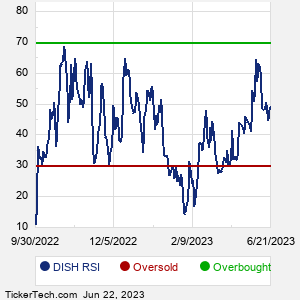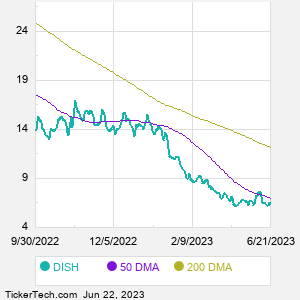DISH Network is a holding company. Through its subsidiaries, Co. operates two primary business segments: Pay-TV and Wireless. Co. provides pay-TV services under the DISH® brand and the SLING® brand. Co. also designs, develops and distributes receiver systems and provides digital broadcast operations. Co. provides prepaid and postpaid retail wireless services to subscribers under its Boost Mobile, Ting Mobile, Republic Wireless and Gen Mobile brands, as well as a portfolio of wireless devices. Co. also invests to acquire wireless spectrum licenses. These wireless spectrum licenses are subject to certain interim and final build-out requirements, as well as certain renewal requirements.
When researching a stock like DISH Network, many investors are the most familiar with Fundamental Analysis — looking at a company's balance sheet, earnings, revenues, and what's happening in that company's underlying business. Investors who use Fundamental Analysis to identify good stocks to buy or sell can also benefit from DISH Technical Analysis to help find a good entry or exit point. Technical Analysis is blind to the fundamentals and looks only at the trading data for DISH stock — the real life supply and demand for the stock over time — and examines that data in different ways. One of these ways is called the Relative Strength Index, or RSI. This popular indicator, originally developed in the 1970's by J. Welles Wilder, looks at a 14-day moving average of a stock's gains on its up days, versus its losses on its down days. The resulting DISH RSI is a value that measures momentum, oscillating between "oversold" and "overbought" on a scale of zero to 100. A reading below 30 is viewed to be oversold, which a bullish investor could look to as a sign that the selling is in the process of exhausting itself, and look for entry point opportunities. A reading above 70 is viewed to be overbought, which could indicate that a rally in progress is starting to get crowded with buyers. If the rally has been a long one, that could be a sign that a pullback is overdue. |



